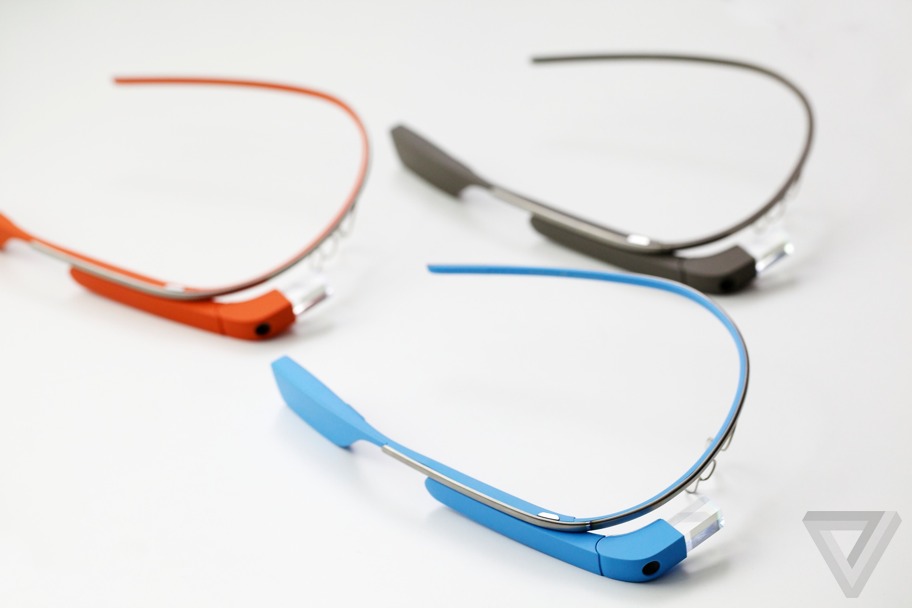If you missed your chance to buy Google Glass Tuesday, it's probably for the best, according to the product's earliest users.
Google opened the gates to its face-mounted computer for a 24-hour window last week, and an eager public snapped up every model. Hate it or love it, everyone is curious.
But the Google Glass "Explorers"—a select group who got the first few thousand models—have a message for people who want to join their tech-savvy in-crowd: Wait.
"There's no rush," said Explorer and developer of the GlassFit app Noble Ackerson, "[Future iterations are] probably going to be cheaper and a lot better than this beta product."
It's not that Glass isn't innovative or promising—it just delivers limited utility for its $1,500 price tag. "It continues to frustrate me because it's so unfinished," said technology blogger Robert Scoble. "It's a very expensive price for what it does right now."
Users complained that the dearth of applications—both from Google and third-party developers—means Glass just isn't all that useful yet. Some were frustrated about the recent decision to scrap the video-calling feature. A Google developer conference in June will showcase new software—and provide a test of Glass's mass market viability, Scoble said.
For now, the general consensus among the Explorers National Journal talked with is that Glass just isn't practical for the average use.
"When people are looking at buying Glass, they need to understand it's a concept," said Larry Domine, who teaches at Milwaukee Area Technical College. "It's really at the development stage." Added Larry Walsh, who runs the IT news and analysis site Channelnomics: "It's just not a very intuitive or usable device."
Ackerson, who just celebrated his one-year anniversary as an Explorer, believes Glass's acceptance will depend on its utility. "The general population won't get used to Glass until they find a use for it," he said.
And the slow rollout of Glass, says Ackerson, fuels an "aura of exclusivity" and "echo chamber" of criticism from people who haven't even worn the device. To help satiate the curiosity of the many who don't have a pair of Glass, he started the Society of Glass Enthusiasts, which now has over 3,000 members, to help educate the general public about the product.
On the other hand, Daniel Castro, a senior analyst at the Information Technology and Innovation Institute in Washington, believes that Google's gradual rollout is a smart move because it allows for a trial-and-error period with a small group of people enthusiastic about Glass's success.
Among the most common laments is Glass's battery life, which Google says is improved in its latest update. Users also said they hoped to see better apps for navigation, environment recognition, and communication. "A lot of things that I want to do are still apps that I have on my phone," Domine said.
"Google's been getting a pretty steady barrage of criticisms over Glass," Walsh said. "It's not about privacy; it's about functionality."
Even shooting hands-free photos and videos—one of Glass's main calling cards—has come with problems. Users reported accidentally taking photos by blinking, some of which ended up on Facebook. Scoble added that the tiny screen makes it difficult to review photos, and there's no way to upload them to services like Instagram.
So who should be using Glass? Explorers said the clientele falls into three categories: Developers or creatives with a business idea, technophiles (who probably already have a pair), and people with extra money to spend.
"It was the first-kid-on-the-block thing that got me," said Walsh. "My experience with it proved it not to be a good investment."
One Explorer who has put the technology to professional use is Dr. Rafael Grossman, who has performed surgery while wearing Glass and sees lots of possibility in the healthcare field. He was able to livestream an operation while his students watched. "If you could integrate Glass to the electronic health record, … I think that you prevent medical errors."
Still, Grossman said he uses his Glass only for professional purposes. "At that price tag, the regular user would not be making a wise decision," he said. "It's not ready to be everything you would want it to do."
One day, users said, Glass's performance will match its potential. Emergency responders could see real-time building layouts. Construction workers could read instructions without having to put down their tools. And a mother could teach her child to cook a family recipe from across the country.
Even today's Glass, Ackerson says, makes technology less intrusive by keeping his hands free and allowing him to see moments normally, not through the lens of a camera.
But for now, buyers should be prepared to spend a lot of money to help put a limited system through its paces.
And, of course, they should be prepared to deal with the social fallout that comes with it. Users should be prepared to be somewhat of a spectacle—and deal with a fair amount of derision. "There's a high probability of not getting laid if you're wearing it," Walsh said. "You're also buying into what is still now a social stigmatism."


0 comments:
Post a Comment